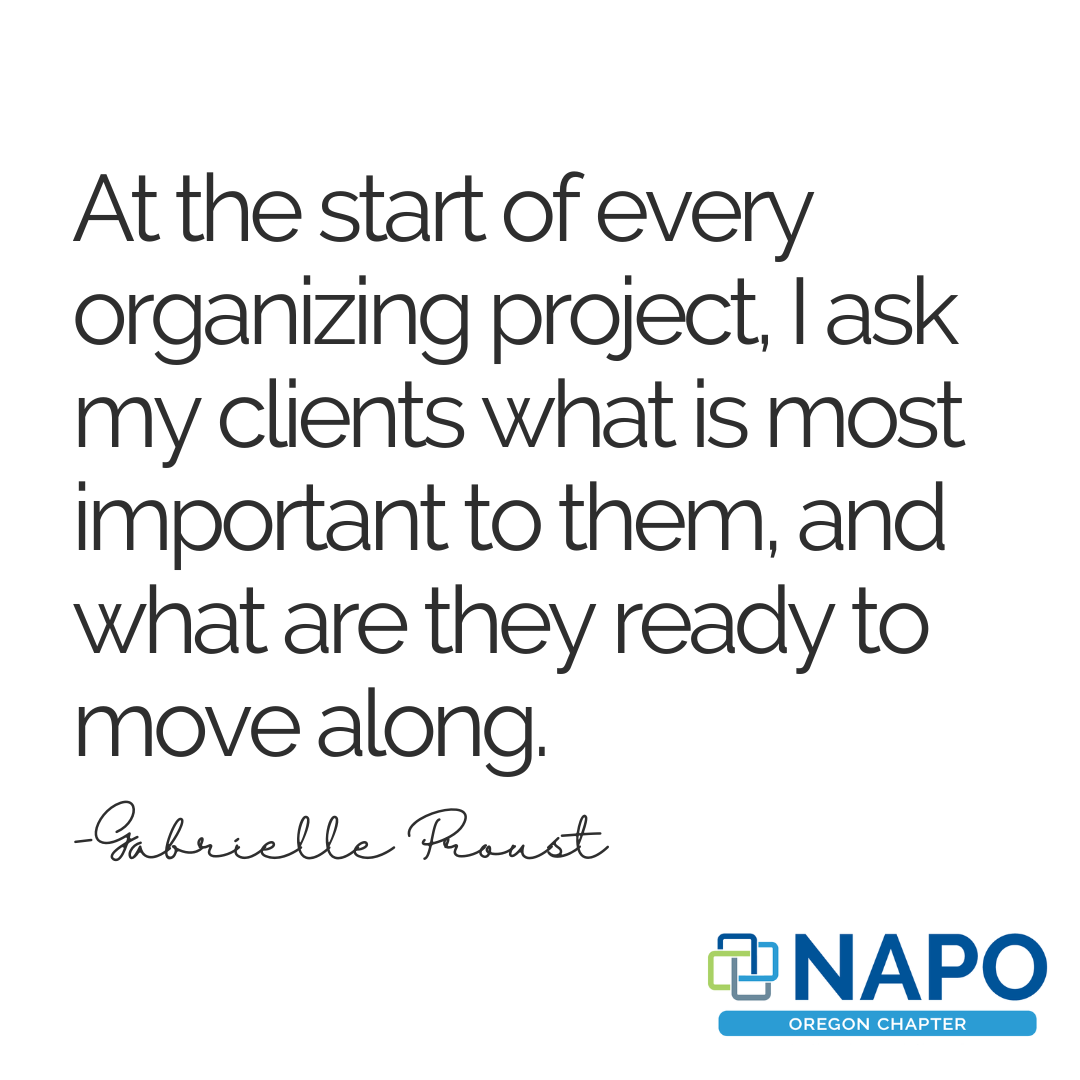
Author: Gabrielle Proust, Proust Dynamic Organizing
It was only after I shoved aside the third casserole pan in my quest for a trowel that I faced my worst fear. I am a Professional Organizer, and I couldn’t find anything in my own garage! Tools were intertwined with tires, bike pumps and bric-a-brac were bonding, and the decorations were dangling with the dust pans.
“Enough!” I said aloud. "Enough of this catastrophic conundrum of chaotic containers cluttering up my car spot!"
 You see, an hour earlier, the rain and leaves falling on my head had convinced me it is Fall. And with it, my professional training announced itself with a big voice in my head:
You see, an hour earlier, the rain and leaves falling on my head had convinced me it is Fall. And with it, my professional training announced itself with a big voice in my head:
Fall is a great time to clean up and organize garages and outdoor sheds. The weather is cooler, the garden is waning, and it’s time to bring in the tools and cover the patio furniture.
Problem was, I spotted that one weed missed. It had to die. Right then and there. So off to the garage I went for a trowel. Argh! Three hours later I have no trowel, the daylight is gone, and I swear, that weed is grinning menacingly at me.
Then I thought about Susan.
I’ve changed her name to protect her from the Clean Police – you know, those people always raising their eyebrows at messes and “harrumphing“ when they spot disorder.
Yeah, them. They are so annoying.
Susan moved into her dream house several years ago – a Victorian cottage that needed a little work.
Years later, all was gorgeous and immaculate…except for the garage. During the initial home renovations, everything that didn’t fit somewhere landed in the garage. She always intended to sort it out once she had the time.
Well, as is true for so many of us, life happened. Her garage became One Big Mess. She was just too busy to organize it, so she called the professional - me.
She hired me to organize the projects, arrange the equipment, and discard the junk.

The Key to Tackling a Garage Project: Zones for Categories
At the start of every organizing project, I ask my clients what is most important to them, and what are they ready to move along. But before she could even answer that question, we had to inventory the garage. We identified five major categories:
- Equipment for training and showing her dogs
- Supplies for restoring and painting the house
- Power tools and auto parts
- Gardening supplies and implements
- Junk
Simply coming up with the categories helped her feel like the task was no longer overwhelming. It was the first time she smiled inside her garage in years.
With list in hand, we sectioned her garage. She has a large space, so the process took 4 days.
Creating the Zones Based on Each Category
Category 1. I started on the right side where there was already shelving. I pulled out everything that wasn’t training & showing dogs related and set it aside. Next, I moved to the opposite side and did the same for the power tools. Heavy tools went on the bottom shelves.
Accessories, lighter tools, and auto supplies went in the cupboards above. The piles of batteries were sorted and stored with the corresponding tool. I left the workbench empty and ready to use.
Category 2. Next, it was time for the back wall where all the small tools and restoring projects would be organized. Susan is “vertically challenged”, so both peg boards needed to be lowered to a more practical height.
Category 3. Sorting the tools into categories helped make the placement easy: painting, wall-paper equipment, general tools like hammers, goggles and gloves. Most of the tools went in drawers that were labeled simply (this is a garage after all). The paint brushes and frequently used tools went on the pegboard. I made sure to use the little clips that keep the pegs from jumping off.
Once I established the best placement, I used a black marker to show where “home” is for each tool on the pegboard.
Category 4. For the garden area, it worked better to put the tools just outside the back door on hooks under an overhang in the garden. The supplies stayed inside on shelves near the door.
I told Susan to take a little time now to clean, sharpen and paint her garden tools so they’ll be ready to go when the gardening bug comes back next spring. We also moved the old fertilizers and hazardous materials to the Junk pile.
After 8 hours the first four items on her list were sorted. Once that was done, number five was easy. Junk was everything that remained!
Three trips to Goodwill and one trip to the dump (and hazardous materials drop-off) was all it took. Susan was pleased, and her garage was no longer an embarrassment.

Do you have One Big Mess than needs organizing? Does it feel overwhelming?
You will find clarity as you finish each area, and you can take a break to do some tweaking. Many of my clients only need a push to get started. They are motivated to get it finished after I leave. Other clients have me back once a year to refresh and modify the whole area.
Either way, they can find what they want, when they want it, making the garage a wonderful useful space.
Last weekend, I took the same approach to my One Big Mess. Genius! I also found the trowel and that weed is no more!

Author: Gabrielle Proust
NAPO Oregon Chapter President
Proust Dynamic Organizing
proustdynamicorganizing.com